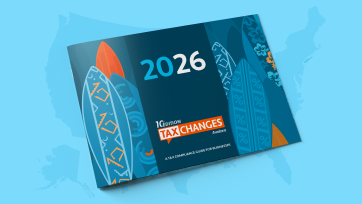
Is your business liable for consumer use tax?
People tend to understand at least the basic concept of sales tax. Buyers and sellers alike typically know it’s tax that buyers pay at the point of purchase. But what about consumer use tax? This is likely where the confusion clouds roll in.
If you’re a new seller, are you aware that consumer use tax is just as obligatory as sales tax? Many sellers overlook this fact and fail to report it properly. Understanding consumer use tax is imperative to operate your business legally and maintain tax compliance.
We hope to clear up the clouds for you in this blog post.
What is consumer use tax, exactly?
Where there’s sales tax, there’s usually use tax — most states that levy sales tax also levy use tax. Often the rates are the same, but not always.
Consumer use tax is a means for states to secure revenue when an eligible sale isn’t taxed. This can happen in several situations, such as when a seller doesn’t have sales tax nexus in the state and isn’t required to collect sales tax on products sold there. The buyer is then accountable for remitting the appropriate consumer use tax to authorities.
Consumer use tax must also be paid when a buyer purchases a taxable item in jurisdictions with lower tax rates than the rates in their resident state or town. If you buy a car in Oregon, where you’ll pay no tax, and drive it to your home in Pennsylvania, you’ll likely owe tax at PA’s going rate. Purchases made in other countries are also beholden to those laws. And regardless of the situation, the burden to report and pay lies on the buyer.
Since businesses can also be consumers, they can also owe consumer use tax when they don’t pay sales tax on a taxable transaction (e.g., the retailer didn’t collect it). And businesses can trigger consumer use tax liability in sundry other situations. For example, if a business “consumes” tax-free merchandise for resale or use, that business might owe tax on that merchandise.
The top three qualifiers are:
· Promotional giveaways
· Inventory transfers or withdrawals
· Charitable donations
If a restaurant purchases exempt T-shirts as part of its employees’ uniforms and gives away some of those T-shirts to customers during an event, the restaurant would owe consumer use tax.
Another situation that would impose a consumer use tax obligation could be if a retail establishment uses a table from sales inventory in a display, then decides to keep it as a permanent part of their display. Or if a company pulls a ream of printer paper off the sales shelf to use in their office. A business would owe use tax on the table and the paper.
An organization might also find itself owing consumer use tax for charitable donations in a circumstance such as when an art gallery takes some reproduction prints from its gift shop to raffle off at a charitable auction.
Organizations typically report use tax differently than individuals — if they report the taxes at all. Authorities often target businesses for unpaid consumer use tax, and many a business has been audited and found to owe. Aiding these auditing endeavors is that the systems companies use to track their spending are often the same systems auditors use to discover delinquent tax liabilities.
So, why then do many organizations overlook consumer use tax? Sometimes, companies’ complacency is derived from not understanding consumer use tax or the necessity to report it. Some industries — such as construction, hospitality, and manufacturing — bear more complexities and variance in their consumer tax regulations and face increased compliance challenges.
Keep the clouds clear
To fully understand the intricacies of your potential sales and use tax obligations, consult your state and local tax authorities. Ignoring your consumer use tax liabilities, cutting corners, or assuming one tax jurisdiction authority is the same as another can only lead to compliance failures and penalties that can endanger your business.
If you’d like to dive deeper into the importance of consumer use tax, read our blog: What businesses need to know about sales tax, consumer use tax, and seller tax.

Avalara Tax Changes 2026 is here
The 10th edition of our annual report engagingly breaks down key policies related to sales tax, tariffs, and VAT.
Stay up to date
Sign up for our free newsletter and stay up to date with the latest tax news.














